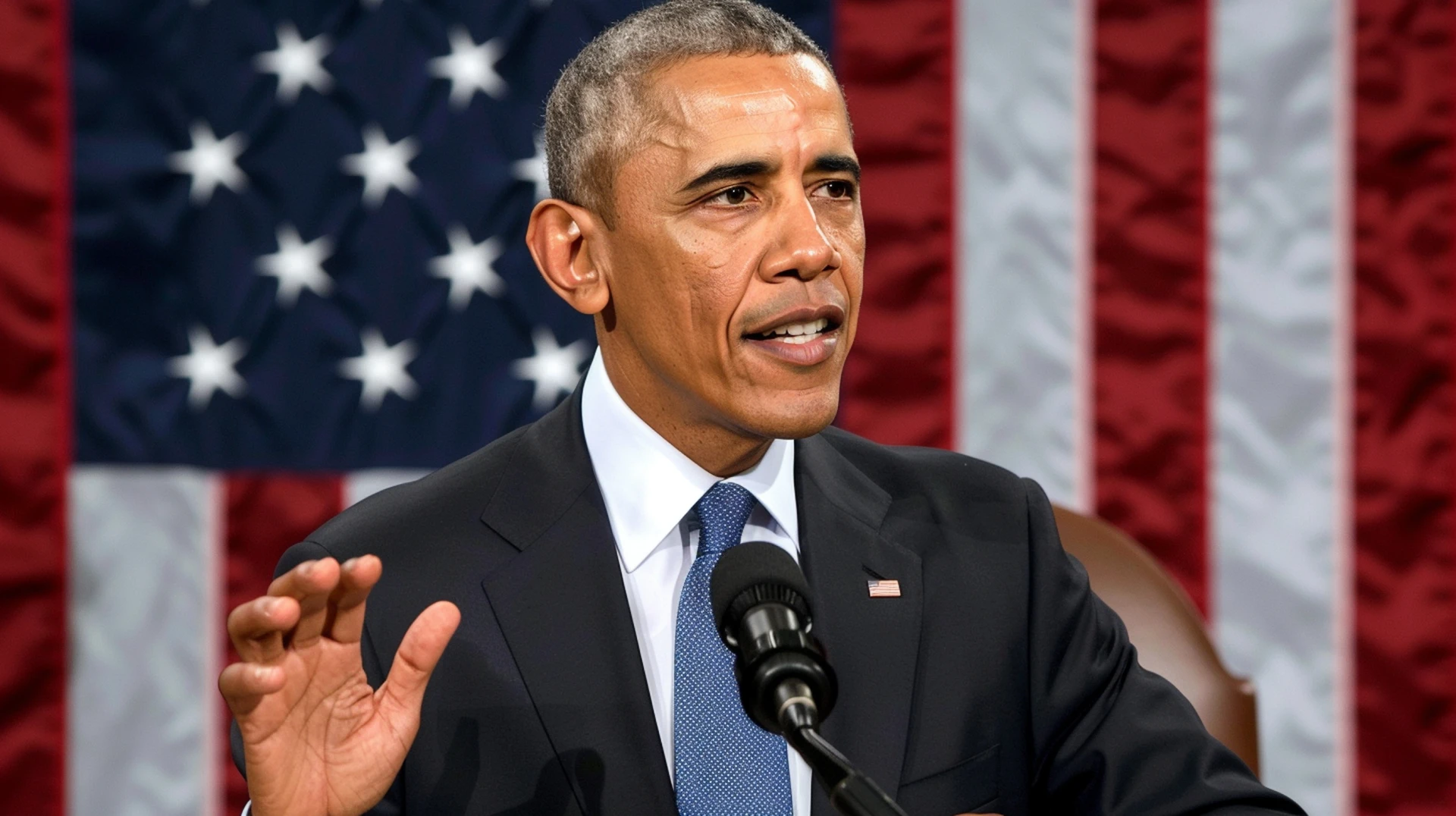1. Introduction
Barack Obama, the 44th President of the United States, is often cited as one of the most charismatic leaders of contemporary history. His rise to prominence was marked by an exceptional ability to communicate, empathise, and inspire, transcending traditional boundaries of race, class, and nationality. During his presidential campaigns in 2008 and 2012, Obama’s personality and message of “Hope” and “Change” resonated with millions, yet his leadership represents more than slogans—it typifies the intersection of personal charisma and strategic communication.
Charisma, an intangible yet impactful leadership quality, has repeatedly proven crucial for rallying followers and implementing change (Weber, 1947). Yet, charisma alone does not entirely define effective leadership. This whitepaper explores Obama’s charismatic traits, critiques his reliance on communication amidst policy challenges, and distils actionable lessons for business professionals seeking to enhance leadership influence.
2. Obama’s Charismatic Characteristics
The defining features of Barack Obama’s charisma include his eloquent oratory skills, empathetic approach, and strategic use of personal narrative, which collectively established him as a global leader with unmatched public appeal.
2.1. Public Speaking Skills
Obama’s speeches are widely acclaimed for their rhythm, structure, and emotional cadence. His inaugural address in 2009 is an exemplar of his ability to inspire and unite, employing rhetorical devices such as anaphora (“We will rebuild. We will recover. We will emerge…”) to emphasise resolve and continuity. Political communication scholars have frequently cited his ability to adapt language and tone to resonate with diverse audiences (Hart, 2015).
2.2. Empathy and Connection
Empathy lies at the heart of Obama’s leadership appeal. This was particularly evident during moments of national tragedy, such as the Charleston church shooting in 2015, where his delivery of “Amazing Grace” symbolised shared grief and healing. Empathy enables leaders to connect emotionally with their audiences, as demonstrated by Obama’s ability to listen, acknowledge others’ experiences, and align their vision with shared aspirations (Goleman, 1998).
2.3. Personal Narratives
Obama frequently incorporated personal stories in his speeches to connect with listeners. His reflections on his upbringing in Hawaii, his experience as a community organiser, and his family life humanised him, allowing audiences to relate to him on a personal level. Psychological studies affirm the effectiveness of narrative in establishing authenticity and trust (Denning, 2005), qualities essential for leaders in any sector.
3. Positive Aspects of Obama’s Personal Brand
Obama’s charismatic attributes transformed him into not merely a political leader but a global symbol of progress. Several factors underpin the construction and success of his renowned personal brand.
3.1. Success of Transformational Messaging
Obama’s presidential campaigns were built on the cornerstone of optimism. The slogan “Yes We Can” triggered a sense of collective empowerment. Drawing on themes of unity and renewal, Obama utilised transformational language to mobilise voters across ideologies and demographics. His campaigns provide a case study on the power of cohesive branding, which business leaders can emulate to align teams and organisational visions.
3.2. Building Global Trust
Obama’s charisma extended beyond U.S. borders, facilitating diplomatic engagements with world leaders and communities. His ability to build rapport with allies, exemplified by the landmark Paris Climate Agreement, showcased how emotional intelligence can strengthen both formal and informal partnerships. In the corporate world, this demonstrates the potential of trust-building in stakeholder engagement and negotiations.
3.3. Mobilising Grassroots Movements
Obama’s ability to rally grassroots support was unprecedented for a modern campaign. His use of social media platforms, such as Twitter and YouTube, coupled with on-the-ground organising, created a sense of inclusion among supporters. Business professionals can take inspiration from this grassroots approach by fostering participatory environments within their organisations, ensuring stakeholders feel heard and involved.
4. Critique of Obama’s Charisma
While Obama’s charisma was a key driver of his leadership success, it also created certain vulnerabilities, particularly when translating vision into tangible policy outcomes.
4.1. Charisma Without Policy Success
Despite his inspirational rhetoric, another common critique of Obama’s leadership was periodic difficulty in delivering significant legislative victories, particularly during his second term. For instance, while the Affordable Care Act (ACA) transformed healthcare access, its rollout was marred by technological blunders and polarised debates. Critics argued that Obama’s rhetoric at times set expectations that subsequent policies could not sustain.
This suggests that charisma alone cannot guarantee effective governance, a lesson for business leaders who must balance vision with operational competency.
4.2. Challenges in a Polarised Environment
Obama’s ability to connect emotionally with his base was not always sufficient in bridging ideological divisions. His presidency often faced intense opposition from partisan factions, underlining the limitations of charisma in deeply divided environments. Corporate leaders working with increasingly diverse and globally distributed teams should heed this limitation, adopting comprehensive strategies to address structural impediments alongside elevating engagement.
5. Lessons for Business Professionals
5.1. Harnessing the Power of Storytelling
Obama’s use of narrative highlights the power of storytelling in simplifying complex messages and humanising leadership. Business professionals can employ storytelling to articulate organisational goals, build consensus, and inspire innovation. A compelling vision tied to a relatable story can forge stronger teams and align stakeholder efforts with company missions.
5.2. Balancing Empathy and Pragmatism
Leaders often face the challenge of appearing engaging while maintaining their authority. Obama’s example of empathetic communication during crises illustrates how cultivating emotional intelligence enhances leadership credibility. Business leaders who develop their ability to listen, adapt messaging, and demonstrate relatability can create stronger organisational cultures.
5.3. Meeting Vision with Execution
Charismatic leaders must ensure their words are consistently matched by their actions. While an aspirational vision ignites initial enthusiasm, effective strategists must complement it with operational discipline to sustain momentum.
5.4. Leveraging Digital Platforms
Obama’s groundbreaking integration of social media into political campaigning provides invaluable lessons on platform utilisation. For modern corporate leaders, leveraging online tools offers unprecedented opportunities to build networks, energise followers, and adapt messages in real-time.
6. Conclusion
Barack Obama’s presidency marks a compelling case in the role of charisma and communication in leadership. From his eloquence to his cultural symbolism, Obama’s ability to inspire superseded partisan boundaries, cementing his position as one of the most influential public figures of the 21st century. Yet, his leadership journey also underscores that charisma is most effective when paired with robust execution and systemic action.
Business professionals can integrate key lessons from Obama’s leadership, including the importance of empathy, storytelling, and vision alignment. As global markets and corporate cultures grow increasingly complex, leaders who can balance inspiration with pragmatism are best positioned to forge successful futures.
7. References
- Denning, S. (2005). The Leader’s Guide to Storytelling: Mastering the Art and Discipline of Business Narrative. Jossey-Bass.
- Goleman, D. (1998). What Makes a Leader? Harvard Business Review, 76(6), 93-102.
- Hart, R. (2015). Communication and Engagement in Political Campaigns. Oxford University Press.
- Weber, M. (1947). The Theory of Social and Economic Organisation. Free Press.
Obama, B. (2006). The Audacity of Hope: Thoughts on Reclaiming the American Dream. Crown.










